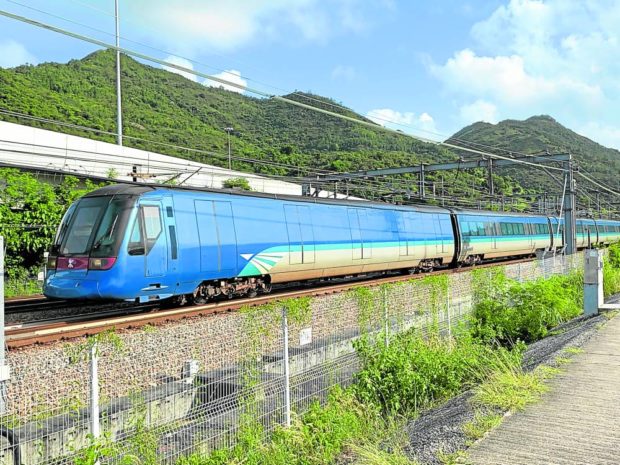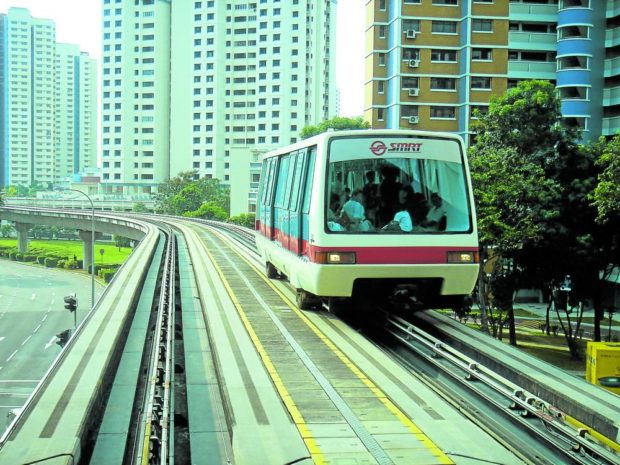In real estate, infrastructure is a crucial factor. It ensures accessibility and connectivity, helps unlock property values, and can potentially usher in progress in an area. Any location that has direct access to key infrastructure projects, main thoroughfares or public transport modes like trains can easily command a premium.
Many governments abroad prioritize infrastructure relating to public transportation such as trains, as this can be a convenient way for commuters, including tourists, to reach destinations faster and cheaper than private vehicles.
According to a 2019 World Economic Forum report, Hong Kong, Singapore, Netherlands, Switzerland and Japan are the top countries with competitive ground and port infrastructure. This meant having efficient and accessible transportation to key business centers and tourist attractions, achieved through extensive road and railroad network that meet international standards of comfort, security and modal efficiency.
Hong Kong
Railways account for 41 percent of all trips in Hong Kong made on public transport each day. Run by MTR Corp. Ltd., the existing railway system of Hong Kong is about 271 kilometers long which includes nine local lines, Airport Express (AEL), The Guangzhou-Shenzhen-Hong Kong Express Rail Link (Hong Kong Section) (XRL), and Light Rail.
The 35.2-km AEL provides services to Hong Kong’s international airport and in-town facilities in some stations, while the 26-km Hong Kong Section of XRL, which connects with the national high speed rail network, links Hong Kong West Kowloon to mainland destinations. The nine local lines, AEL and XRL carried around 3.9 million passengers daily in 2021.
Meanwhile, the 36.2-km Light Rail is a local transportation network for the residents of the Northwest New Territories. In 2021, it carried about 387,900 passenger trips per day.
Singapore
More than 130 stations across six mass rapid transit (MRT) lines and more than 40 stations across two light rail transit (LRT) lines span Singapore. The 200-km MRT system has over 3 million passengers per day, while the 28-km LRT system has over 200,000 passengers per day.The LRT lines are the 8-km Bukit Panjang LRT, the first driverless inter-town train feeder service, and Sengkang and Punggol Light Rapid Transit system, which serves the two fastest growing residential estates in Singapore.
The MRT lines cover the 45-km North-South Line, which serves a large number of mature residential estates; the 57-km East-West Line, the longest railway in Singapore; and the 20-km North East Line, which aims to cater to the growing neighborhood in selected regions. Also included in the MRT lines are Thomson-East Coast Line, which provided convenient MRT access to more households; the Circle Line, which shortened trips between the north, east and west of Singapore; and the Downtown Line, which offered more direct routes and faster commutes.
Netherlands
Railway travel is a comfortable way to get around in the Netherlands. The country has an extensive railway network with comfortable and modern trains and around 400 stations.
Trams, which are operated in large cities because they are suitable for transportation of large numbers of passengers, are located in Amsterdam, the Hague, Rotterdam and Utrecht. Trains in the Netherlands include the Intercity, which links the cities and the Sprinter, which stops more frequently and at the smaller stations. The light rail, which lies between the train and the tram, travels more slowly than the train and over long distances than the tram. The high-speed line, meanwhile, runs between Schipol airport and Antwerp with the Dutch section of the line called HSL-South.
Switzerland
When it comes to public transport, Switzerland offers a variety of Swiss trains for locals and tourists alike.
Switzerland’s main railway network is made up of regional and intercity trains, namely RegioExpress, Regio, InterCity, InterRegio and S-Bahn. RegioExpress trains link regional destinations with larger Swiss cities. Regio trains connect local towns. InterCity trains link major Swiss cities. InterRegio trains connect Zurich and Geneva with cities across the whole of Switzerland. S-Bahn, or suburban trains, is a network of trains that operate within most big cities.
High-speed trains also operate in Switzerland, internationally and locally. International high-speed trains include ICE, which connects Switzerland to Germany and the Netherlands; RailJet, which links Zurich with Vienna, Austria; EuroCity, which connects Zurich, Basel and Geneva to Milan, Italy; and TGV, which connects Zurich, Basel and Geneva to Paris, France. Domestic high-speed trains, called InterCity Neigezug, transport passengers quickly and in comfort from one side of the country to the other.
Switzerland also offers international night trains, connecting with Austria, Germany, Hungary, Croatia and Serbia; scenic trains; and private trains.
Japan
Six railway companies, collectively called Japan Railways (JR), operate in Japan to provide a nationwide network of train lines. The companies are JR Hokkaido, JR East, JR Central, JR West, JR Shikoku and JR Kyushu. JR covers scenic local trains and super express shinkansen. The trains offer free WiFi.
In terms of public transportation, Japan is well known for its shinkansen, the world-renowned bullet train that offers the highest rail speeds. The train operates from Tokyo to major cities in the country. The local railways travel to some of Japan’s most interesting spots, often snaking around mountains and through scenic villages.
Sources: Japan National Tourism Organization, td.gov.hk, lta.gov.sg, interrail.eu, holland.com, ns.nl, government.nl



